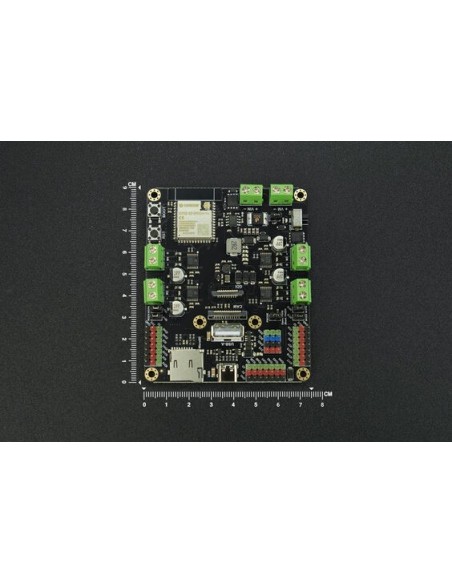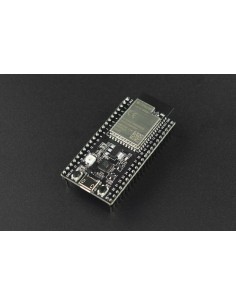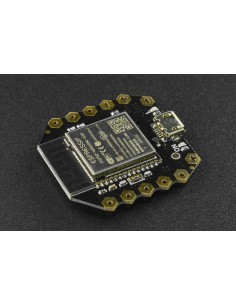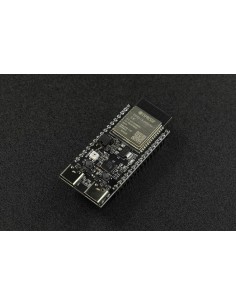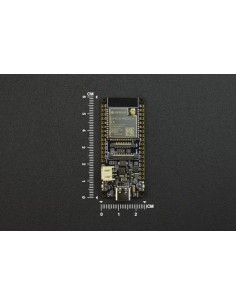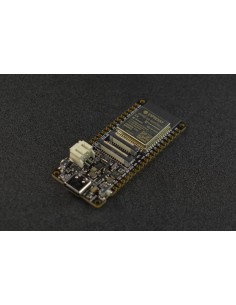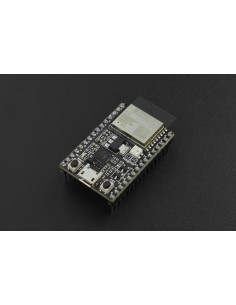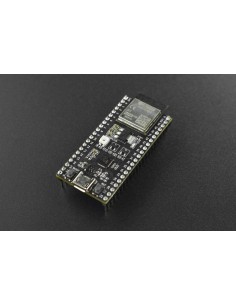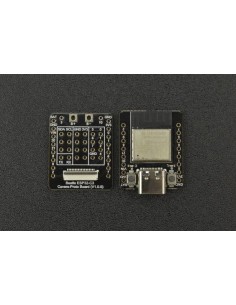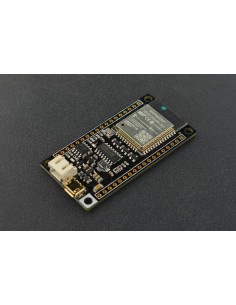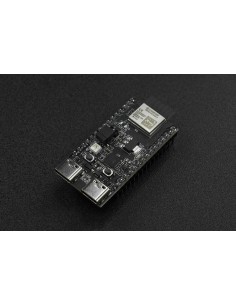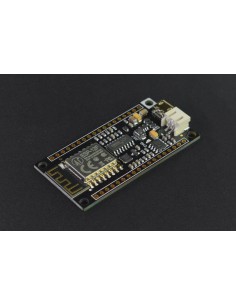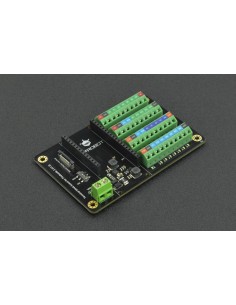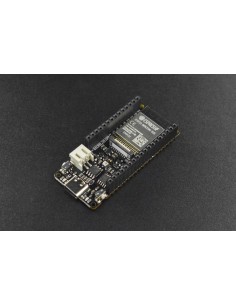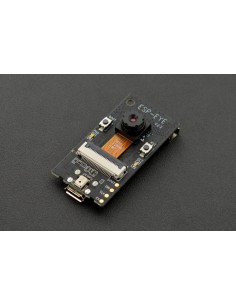Experience the Robot's First-Person View
The Romeo ESP32-S3 is equipped with an OV2640 camera. By using the video transmission function on a computer or smartphone, users can view the robot's world from a first-person perspective, immersing themselves in its exploration. After training the robot, it can also perform AI recognition tasks. The OV2640 camera boasts a 2-megapixel resolution, supporting a maximum resolution of 1600*1200. Whether capturing images or recording videos, it can deliver clear visuals.
.
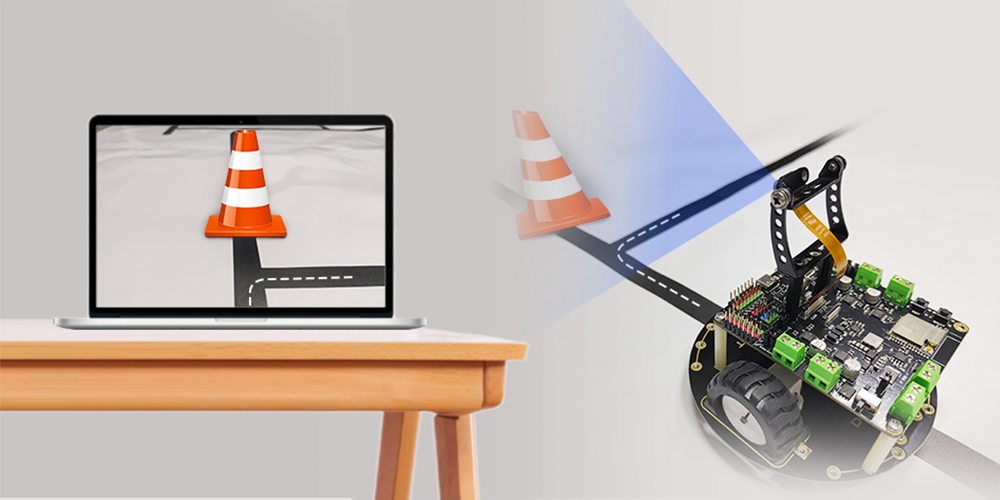
.
Unleash the Power of ESP32-S3 for Advanced Capabilities
The Romeo ESP32-S3 incorporates the ESP32-S3-WROOM-1U-N16R8 module, which boasts a built-in 16MB Flash and 8MB PSRAM. Its spacious storage capacity accommodates a greater volume of complex code and data. With a blazing main frequency of up to 240MHz, the ESP32-S3 chip is equipped with vector instructions that accelerate tasks like neural network computations and signal processing, enabling AI functionalities such as image and speech recognition. Supporting dual-mode communication of 2.4GHz Wi-Fi and Bluetooth 5 (LE), the ESP32-S3 facilitates wireless remote control and image transmission.
.
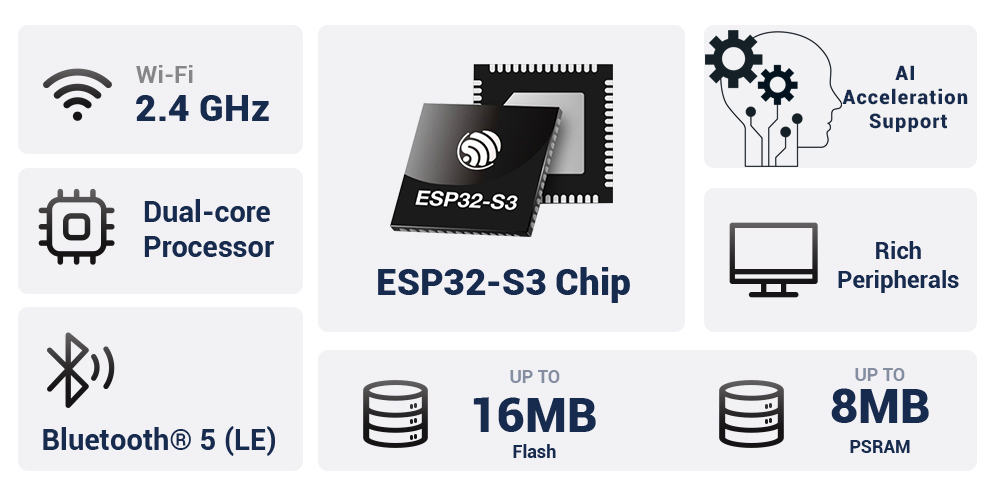
.
Versatile Interface Expansion for Robots
Romeo ESP32-S3 offers a multitude of reserved data interfaces, allowing for the integration of various devices to empower the robot with limitless potential. For instance, by connecting a microphone, the robot gains auditory capabilities, enabling voice-controlled interactions. By connecting an amplifier, the robot can express itself. Integration of a gas sensor grants the robot a sense of smell. Moreover, Romeo ESP32-S3 provides a stable 5V power supply, facilitating the connection of multiple servos to realize functionalities like a robotic arm.
.
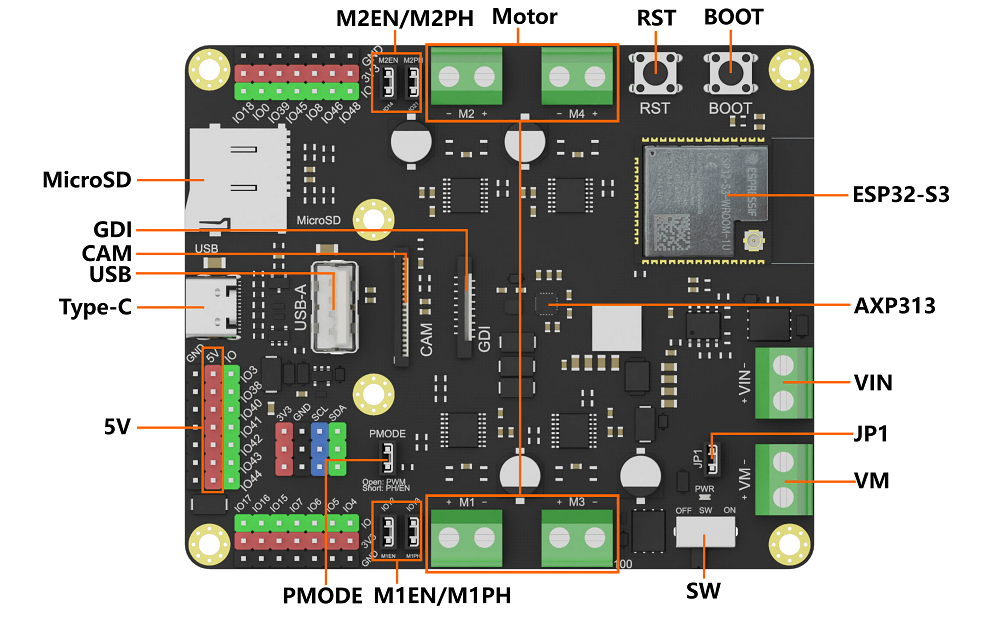
.
Support Multiple Development Environments
Romeo ESP32-S3 supports various programming environments, including Arduino IDE and ESP-IDF. It also accommodates popular programming languages like C++ and MicroPython, allowing developers to effortlessly manipulate the hardware using familiar programming languages.
.

.
FEATURES
- A four-channel 2.5A high-current H-bridge motor driver
- Supporting both PH/EN control mode and PWM control mode
- Multiple 5V power outputs, facilitating servo motor control
- An autonomous camera power circuit
- On-board GDI display, DVP camera, USB, and MicroSD card interfaces
- Featuring the on-board ESP32-S3-1U-N16R8 (16MB FLASH / 8MB PSRAM)
- Enabling dual-mode communication through Wi-Fi and Bluetooth 5 (LE).
.
APPLICATIONS
- FPV RC car development
- FPV toy aircraft
- Simulated flight
- Aerospace
- Robot competitions
.
SPECIFICATION
Basic Parameters
- Type-C Input Voltage: 5V
- Operating Voltage: 3.3V
- VIN Input Voltage: 7-24V
- VM Input Voltage: 5-24V
- Maximum Output Current of 5V Power Supply: 2A
- Motor Drive Capacity: 2.5A
- Operating Temperature: 0 to 60℃
- Dimension: 25.4x60mm/2.95x3.54"
.
Hardware Information
- Processor: Xtensa® dual-core 32-bit LX7 microprocessor
- Main Frequency: 240 MHz
- SRAM: 512KB
- ROM: 384KB
- Flash: 16MB
- PSRAM: 8MB
- RTC SRAM: 16KB
- USB: USB 2.0 OTG full-speed
.
WIFI
- WIFI Protocol: IEEE 802.11b/g/n
- Bandwidth: Support 20 MHz and 40 MHz at 2.4 GHz band
- WIFI Mode: Station, SoftAP, SoftAP+Station combined mode
- WIFI Frequency: 2.4GHz
- Frame Aggregation: TX/RX A-MPDU, TX/RX A-MSDU
.
Bluetooth
- Bluetooth Protocol: Bluetooth 5, Bluetooth mesh
- Bluetooth Frequency: 125 Kbps, 500 Kbps, 1 Mbps, 2 Mbps
.
Ports
- Digital I/O x27
- LED PWM Controller 8 Channels
- SPI x4
- UART x3
- I2C x2
- I2S x2
- IR Transceiver: transmit channel x5, receive channel x5
- 2×12-bit SAR ADC, 20 Channels
- DMA Controller: transmit channel x5, receive channel x5
.
SHIPPING LIST
- Romeo ESP32-S3 Development Board x1

